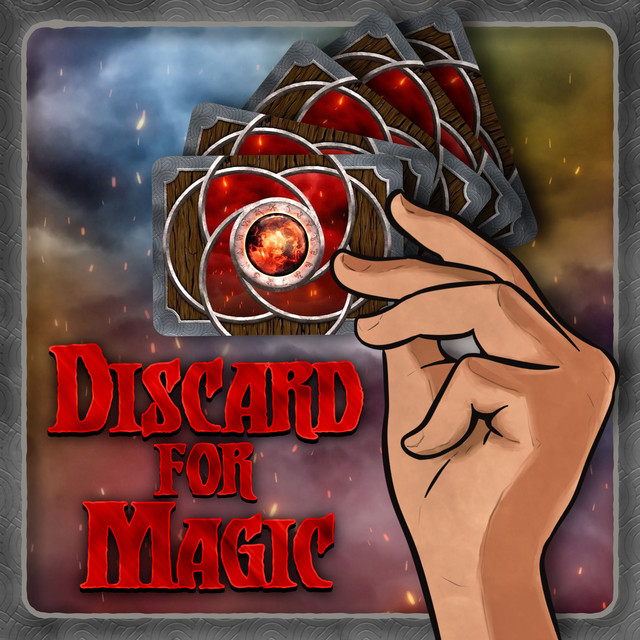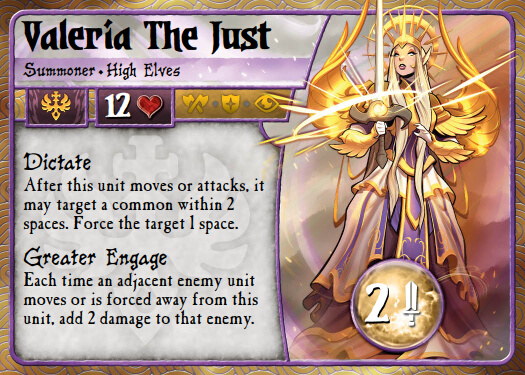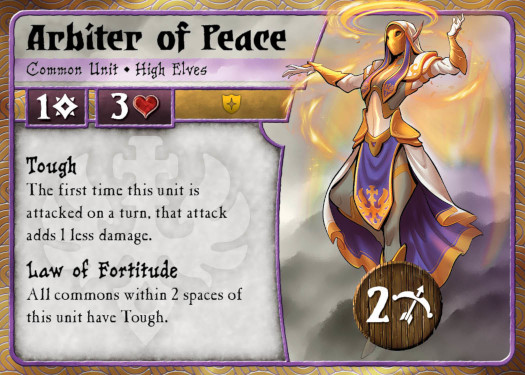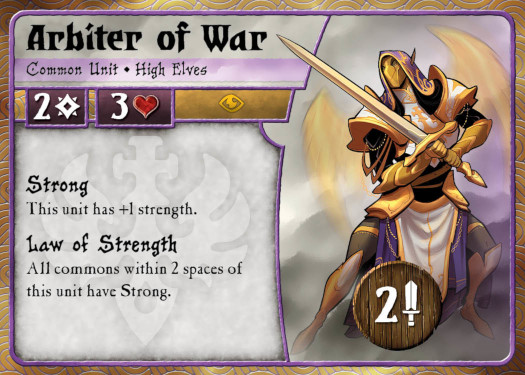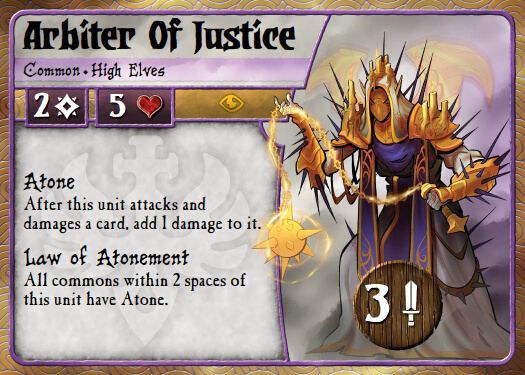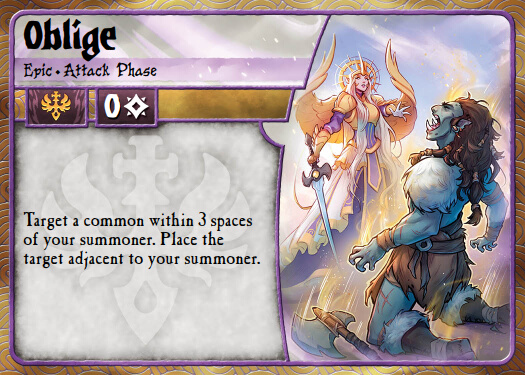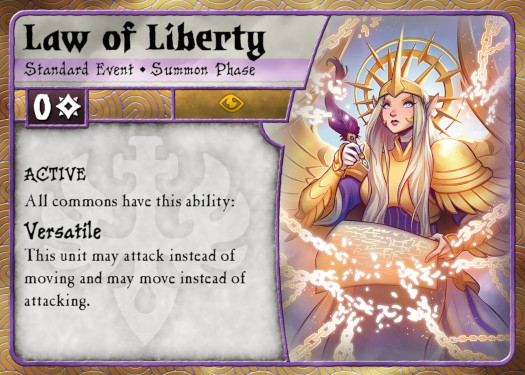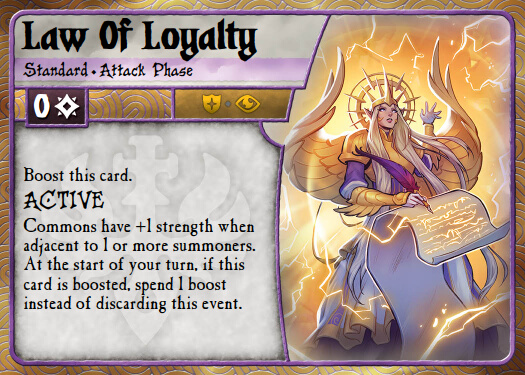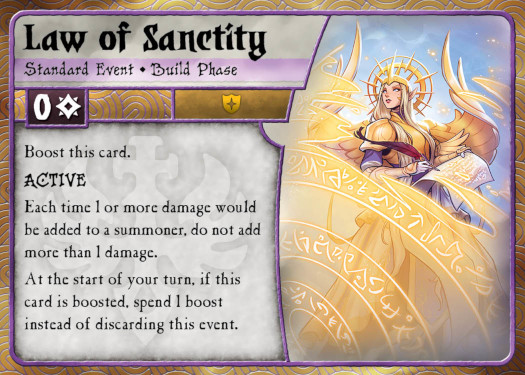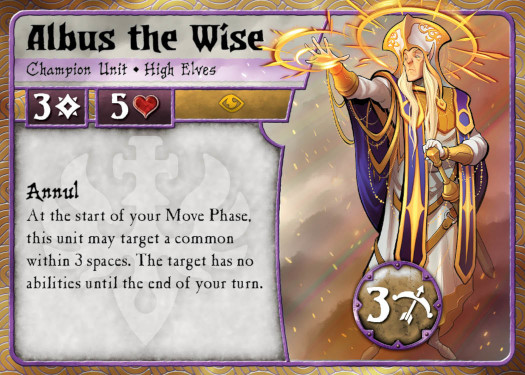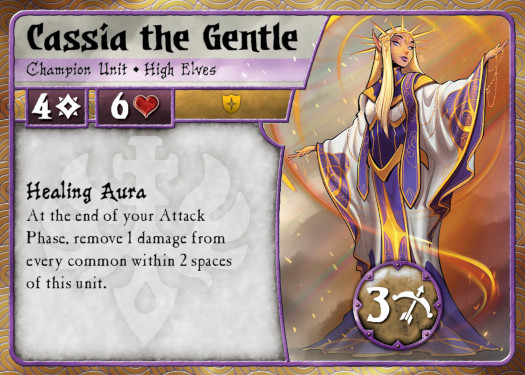
The High Elves Resolve / Divine deck focuses on three commons with powerful auras (called laws) that affect other commons (including enemies), making it very important to consider where every common is on the battlefield. This is a faction with a high focus on controlling space, keeping your laws around and taking advantage of them while denying your opponent the opportunity to do so.
High Elves is a versatile faction with mid-range focus, yet capable of both long-range fighting and brawling at melee range, but preferring to keep the flexibility to adjust and readjust the space between units to shape the battlefield with their laws.
Arbiter of Peace and Arbiter of War create a defensive and offensive law respectively, and friendly units covered by both become very unfairly efficient units, even more unfair when you heal them with the Attendant Priest and Cassia the Gentle.
These units can be boosted yet more with two events, Law of Loyalty and Law of Liberty. This is how High Elves win the economy war, by creating unfairly strong commons through their laws and positioning that favors them more than the opponent.
The High Elves are an extremely tactical faction with a hyperfocus on unit positioning. They have very specific tools for each job with a main plan based on Arbiter of Peace and Arbiter of War working together to generate overwhelming value. High Elves as a faction can fight at long range or close range as the game requires, but they need to be fighting at all times as they lack big combos to set up or economic tools to exploit. If your opponent is not suffering the war of attrition, some factions can set up big combos or an economy that will overwhelm the High Elves.
Valeria is both a support and combat summoner. While most of the time she will act as a support summoner, she can do combat well against enemy commons when the situation calls for it.
As a support she can help reposition units after she moves, especially allowing some friendly units to move one extra space giving High Elves some needed reach, something you often want particularly with Arbiter of Justice. She can do it again when attacking, even attacking a friendly gate if necessary to get this effect.
She is also the best tool High Elves have against over-aggression, her combat ability against commons allows her to do a lot of damage to them, often being able to kill a common unit by just moving next to it. This makes it very hard to rush the High Elves, something many factions want to do to take advantage of the Arbiter of Peace and Arbiter of War auras.
Like Arbiter of Peace, Arbiter of War is also key to the faction’s performance. Without the aura they bring, High Elves struggle to do a high amount of damage. While this is a melee unit it is actually a predominantly support unit that should be hidden most of the game. Unlike the aura from Arbiter of Peace, it is very easy for the opponent to take advantage of this one if they manage to place units into range and for that reason one should be careful to not give good options to the opponent, even if sometimes it will be inevitable.
Ironically for their names, the Arbiters of Peace will often be attacking round after round, but Arbiters of War are generally hidden behind lines just supporting the Arbiters of Peace, since as mentioned, allowing the opponent to take advantage of this aura is too powerful and should be minimized whenever possible.
This is going to be your most often summoned champion, not only because of his versatility both as a support and combat unit, but because his cheap cost works great with the High Elves plan of having a lot of commons on the battlefield.
Don’t be afraid of having Albus just sitting back supporting your units where he is more comfortable. He has many situational uses, especially disabling opponent abilities during your turn, but his core use is to deactivate either the Law of Fortitude on an enemy common or Law of Atonement on one of your units. While it may not seem a great effect, the fact that you can do it every turn without really risking Albus accumulates a lot of value for a cheap cost. Albus will generally prove extremely efficient over time.
The first priority of the High Elves is to have at least one Arbiter of Peace and one Arbiter of War out and to keep them alive so the rest of your commons are very efficient. Most of your games will start bringing one of each out to create a ranged line of fire, and trying to have at least one Arbiter of Justice on the front line, thus making it very hard for the opponent commons to attack.
If the opponent comes at you with commons trying to take advantage of your auras, this is then where the summoner Valeria shines. A combat / support summoner that is especially strong at destroying commons, with the help of Oblige and Law of Sanctity, she can become the ultimate common killer.
One needs to be mindful when is the right time for Valeria to jump in and out to kill enemy commons. Until then, use Valeria as support as the extra movements she can give to friendly units is very valuable.
Even without Valeria, Arbiter of Justice can make it very hard for melee commons to sustain an offensive and the champion Titus the Devout can completely stall an overly aggressive enemy offensive.
While High Elves can be very aggressive when necessary and opportune using Valeria + Sanctity + gates and Arbiters of Justice supported by auras, they are not particularly fond of that strategy. As mentioned before they are a versatile faction which doesn’t have a particular tendency to aggression or defense, but rather a focus on managing and controlling space. The goal is to have their units in the perfect position to have friendly commons under positive auras and the enemy commons under their negative aura. If they manage that they can have significantly more efficient units than the other factions.
The High Elves' disadvantage is that if the game slows down, they don’t have a plan B. Their plan A is to fight and by that plan they will win or lose.
While their approach to the game is kind of linear, they have the tools to face the different threats that the other factions of Summoner Wars have to offer.
When playing High Elves, the correct position of the units and understanding where to move them is what will define your game results. Also knowing when to bring out each of the tools is very important as most of their tools are powerful yet offset by a backfire potential.
Because High Elves lack tricks or economy tools and have a strong focus on the tactical placement of the pieces from both sides, controlling space becomes fundamental, very much as if one were playing chess.
You could indeed say that High Elves are the closest to playing chess that a faction in Summoner Wars feels so far.
If you greatly enjoy thinking thoroughly about where common units should end the turn and thinking about your opponent’s position as well as yours, then High Elves is a faction that will promise a lot of fun.
Copyrights for the Summoner Wars logo and art belong to Plaid Hat Games,
used herein with their express permission.

